Environmental Measurement and Modeling
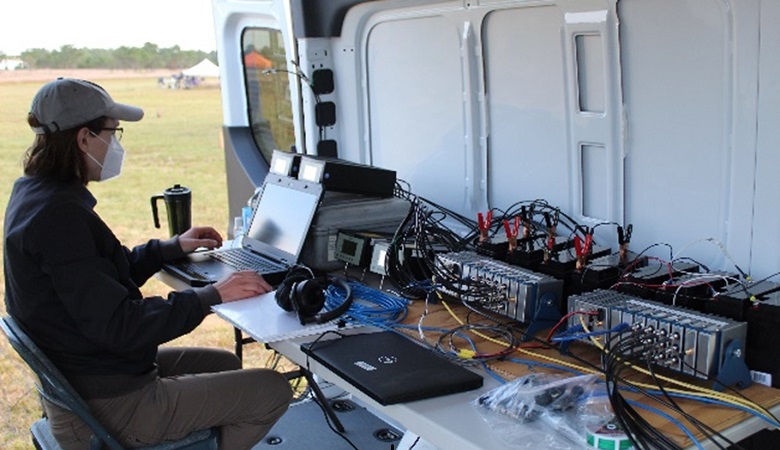
About Us
The U.S. DOT Volpe Center's Environmental Measurement and Modeling Division measures and models acoustics and air quality to support transportation-related noise, air quality, and safety initiatives. Our sponsors—which include FAA, FRA, Environmental Protection Agency (EPA), FHWA, FTA, NHTSA, and National Aeronautics and Space Administration (NASA)—use our work to develop energy and environmental policies.
Some highlights of our work include:
- Air Quality – this list of publications reflects the U.S. DOT Volpe Center’s contribution to air quality literature.
- Acoustics – this bibliography includes publications and papers from 1971 to the present published by the U.S. DOT Volpe Center related to our work in noise measurement, which extends to all modes of transportation.
- Aviation Environmental Design Tool (AEDT) – our team leverages AEDT and provides AEDT training for those who want to learn more about noise and air quality, the basics of modeling environmental consequences of aviation operations in AEDT, and using ASIF or SQL to import study data.
- Advanced Acoustic Model (AAM) – our team develops and maintains the AAM suite of software tools that allows users to model vehicle sound levels at receiver positions, either on a uniform grid or at specific defined locations, from helicopters, tiltrotor vehicles, and fixed wing aircraft.
Our team includes a mix of engineers (civil, acoustics, environmental, electrical, software, general, aerospace), physical scientists and modeling analysts, IT specialists and programming analysts, operations research analysts and environmental protection specialists. They work collaboratively to measure noise and air quality for all modes of transportation and conduct long-term noise monitoring in remote locations, such as national parks.
The team models noise, air quality, and dispersion from transportation-related sources to understand environmental and technological impacts and improve quality of life.
Our Capabilities
Environmental Analysis, Science, and Engineering
Environmental Modeling of Transportation Impacts
- Conduct integrated modeling of transportation impacts using a suite of environmental tools
- Model dispersion from transportation-related sources
- Analyze and develop environmental policies
- Develop and deploy tools that perform environmental measurement and modeling, including FAA environmental tools, such as:
- Aviation Environmental Design Tool (AEDT)
- Integrated Noise Model (INM)
- Model for Assessing Global Exposure of Noise to Transport Airplanes (MAGENTA)
- Noise Integrated Routing System (NIRS)
Noise and Acoustics Measurement for All Modes of Transportation
- Conduct air quality analysis and air pollutant concentration measurement
- Provide aviation noise certification and differential GPS validation
- Use expertise in highway noise models to develop and deploy tools including:
- Traffic Noise Model (TNM)
- Community Noise Model (CNM)
Air Quality Analysis
- Use tools that perform air quality measurement, modeling, and analysis
- Leverage expertise in models such as:
- Environmental Protection Agency (EPA)-preferred air quality dispersion model such as AERMOD
- EPA’s alternate air quality dispersion models, including:
- Dispersion model for predicting air pollutant levels near highways and arterial streets (CALINE3)
- CALINE3-based model to calculate delays and queues that occur at signalized intersections (CAL3QHC)
- Industrial Source Complex (ISC3) dispersion model
- Advanced non-steady-state meteorological and air quality modeling system (CALPUFF)
NextGen Initiative Support
- Help FAA lead several environmental analyses for its Next Generation Air Transportation System (NextGen), including:
- Continuous Lower Energy, Emissions, and Noise (CLEEN) Program
- Environmental Goals and Targets Performance Tracking System
- Environmental Management Systems (EMS)
Applied Data Science and Software Development
- Provide meteorological data measurement
- Analyze and measure traffic data
- Conduct real-time vehicle guidance and tracking
Meet Our Team
View selected staff biographies.
 Christopher J. Roof
Christopher J. Roof
Chief
BS Interdisciplinary Electrical Engineering and Music,
Boston University College of Engineering
As chief of the Environmental Measurement and Modeling Division, Christopher Roof has supported numerous transportation-related acoustics and air quality projects. His three-plus decades of technical experience include measurement, modeling, and analysis of noise, fuel burn, and emissions for all modes of transportation.
Roof provides technical support to the FAA Office of Environment and Energy (AEE). He helped lead the development of aviation environmental models, including the Aviation Environmental Design Tool (AEDT), a model that enables analysis of noise, fuel burn, and emissions interdependencies at multiple levels. Roof also helps FAA coordinate research efforts, including those that support environmental tools. He has partnered with NASA conducting measurement programs designed to develop and improve algorithms, as well as add new aircraft to model databases. Roof undertakes technical analyses for the Society of Automotive Engineers (SAE) Aircraft Noise Committee (A-21) and the National Academy of Sciences, and supports both FAA and National Parks Service (NPS) related to aircraft overflights of national parks.
He has provided environmental support in a number of other areas, including investigations of potential impacts of hovercraft noise on humans and wildlife for the United States Postal Service (USPS), FRA’s National Magnetic Levitation Transportation Technology Deployment Program, FHWA’s Traffic Noise Model (TNM), a FMCSA analysis of potential noise impacts of increased safety inspections, a Department of Energy (DOE) analysis of electrical transmission lines, and the Federal Interagency Committee on Aviation Noise (FICAN) assessment of noise modeling tools in national parks.
The team Roof leads supports the implementation of advanced vehicle technologies for FAA, NASA, and private industry; undertakes cutting-edge research on behalf of the National Academy of Sciences; fields models that are used around the world; and works with diverse interdisciplinary groups within the U.S. DOT Volpe Center to seek innovative solutions to the nation’s transportation system challenges. He is active with multiple committees of the Transportation Research Board.
View Christopher Roof’s LinkedIn profile.
Meghan Ahearn
Physical Scientist
BSE Acoustical Engineering and Music, University of Hartford and the Hartt School of Music
Meghan J. Ahearn became a member of the Environmental Measurement and Modeling Division in 2009. She studied at the University of Hartford and the Hartt School in a unique interdisciplinary acoustics program designed to integrate mechanical engineering education with musical studies to develop acousticians with well-trained ears.
Ahearn’s work at the U.S. DOT Volpe Center has included analysis, software development support, user experience and engagement, technical documentation, training instruction and curriculum development, noise modeling, noise measurements, and project management for FAA, BTS, FHWA, NPS, NHTSA, NASA, FTA, and FRA.
She leads the U.S. DOT Volpe Center's Aviation Environmental Design Tool (AEDT) Training program which includes courses on the fundamentals of noise and air quality for aviation modeling, the basics of modeling environmental consequences of aviation operations, and understanding the structure of AEDT in order to input study data efficiently through the AEDT Standard Input File (ASIF) or directly into SQL databases.
Ahearn is a co-leader for the Bureau of Transportation Statistics (BTS) National Transportation Noise Map, which facilitates the tracking of trends in transportation-related noise by mode, and collectively for multiple transportation modes.
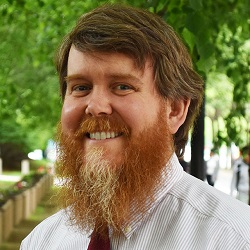 Eric R. Boeker
Eric R. Boeker
General Engineer
MS Acoustics, The Pennsylvania State University
BS Electrical Engineering, Purdue University
BA German, Purdue University
Eric Boeker is a general engineer with more than two decades of experience in noise measurement, modeling, and analysis projects for various modes of transportation working in the U.S. DOT Volpe Center's acoustics group.
Boeker provides technical support to FAA’s Office of Environment and Energy (AEE) as team leader for various aircraft noise data development and noise modeling research efforts. He is also part of the Aviation Environmental Design Tool (AEDT) development team focusing on the integration of noise data and modeling capabilities into the AEDT suite. Boeker is involved in several additional FAA, National Park Service (NPS), and National Aeronautics and Space Administration (NASA) projects involving aircraft noise measurement, algorithm development, modeling, and analysis.
In support of FAA AEE, he serves as chair and undertakes technical analyses for the Society of Automotive Engineers (SAE) “Aircraft Noise Measurement and Aircraft Noise Modeling” committee (A-21). Boeker also participates in the International Aviation Civil Organization (ICAO) Committee for Aviation Environmental Protection (CAEP) Modeling and Databases (MDG) working group. He is also a technical advisor to FAA’s ASCENT Center of Excellence.
In addition to supporting FAA, Boeker provides noise-related support to other transportation agencies, including FRA, NASA, and MARAD.
His graduate research involved acoustical signal processing of active sonar. Boeker is actively involved in the Institute of Noise Control Engineers (INCE), the Society of Automotive Engineers (SAE), and the Acoustical Society of America (ASA).
William Chupp
Engineer
MEng in Mechanical Engineering, Tufts University
BS in Mechanical Engineering, Tufts University
William (Billy) Chupp joined the Environmental Measurement and Modeling Division in 2016. Chupp’s specialties include data analysis, python and SQL scripting, cloud software development, research, and technical writing.
He supports a range of noise, air quality, and data analysis projects. Chupp has been involved in Department of Housing and Urban Development’s (HUD) noise research program and has supported FHWA’s Office of the Human Environment on noise-related research topics during his tenure at the U.S. DOT Volpe Center. He has also performed technical research in support of FRA’s noise regulation revisions. Chupp is also a key member of FHWA’s Congestion Mitigation and Air Quality Improvement Program (CMAQ) support team, specifically as a developer of CMAQ toolkit tools, which help organizations estimate air quality benefits from transportation-related projects in a simplified way. He has presented research on noise and co-authored an NCHRP 25-25 research project report in his time at the U.S. DOT Volpe Center.
In addition to environmental work, Chupp acts as a member of the Secure Data Commons Product Owner team and has direct experience developing cloud software for this purpose. His involvement with ITS JPO-related projects includes serving as a data analyst in support of the Connected Vehicle Pilot Projects independent safety evaluation through the U.S. DOT Volpe Center’s Advanced Vehicle Technologies Division.
Chupp holds both a master’s and a bachelor’s degree in mechanical engineering through Tufts University (Medford, MA). At Tufts, Chupp gained the analytical expertise and creative thinking skills needed to solve the diverse range of problems the Environmental Measurement and Modeling Division tackles.
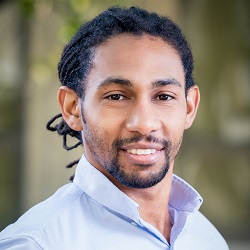 Jordan Cumper
Jordan Cumper
Aerospace Engineer
BS Aerospace Engineering, Boston University
Jordan Cumper joined the U.S. DOT Volpe Center in 2010 as an aerospace engineer in the Environmental Measurement and Modeling Division.
Cumper’s work supporting FAA’s Office of Environment and Energy (AEE) has included utilizing and testing the Aviation Environmental Design Tool (AEDT) for fuel burn, air quality, and noise related analyses. He developed a carbon footprint assessment of U.S. DOT employee travel using an AEDT inventory, utilizing Airport Surface Detection Equipment, Model-X (ASDE-X) data for fuel burn studies within airport terminal areas for System Safety Management Transformation (SSMT), and investigating potential fuel burn savings in Gulf Coast helicopter flights utilizing Automatic Dependent Surveillance-Broadcast (ADS-B) navigation systems. Cumper has also participated in field work for FMCSA and Air Tour Management Plan (ATMP) related measurement trips.
He is currently working on AEDT database and modeling related tasks in support of Goals and Targets and the Committee on Aviation Environmental Protection (CAEP). Cumper is also involved in integrating Performance Data Analysis and Reporting System (PDARS) data into modeling software currently being developed at the U.S. DOT Volpe Center.
 Chris Cutler
Chris Cutler
Physical Scientist
BSE Acoustical Engineering and Music, University of Hartford
Chris Cutler joined the Environmental Measurement and Modeling Division in 2014 through the Pathways internship program and was converted to a full-time physical scientist after receiving his BSE in acoustical engineering and music from the University of Hartford (Hartford, CT) in 2015.
Cutler offers a wide range of support in acoustics-related testing and analysis. He performed extensive software testing and validation for both AEDT 2b and SuperFAR 5.0 releases in support of FAA AEE, and he is the technical support contact for FHWA’s Traffic Noise Model (TNM) 2.5. Through the use of SuperFAR and other U.S. DOT Volpe Center tools, he supports his division’s role as auditor of Part 36 Aircraft Noise Certifications, including DGPS system validation.
Cutler is the in-house small unmanned aerial systems (sUAS) pilot for his division, having flown multiple test flights used to evaluate hardware and collect high-quality GPS tracking data for the eventual purpose of UAS noise certification. He has experience in various acoustic and meteorological data collection system deployments, including ground-plane microphone setups and long-term environmental surveys.
Cutler has traveled internationally in support of a joint FAA-EASA helicopter noise measurement campaign, deploying multiple acoustic measurement systems, and simultaneously collecting acoustic data from helicopters to be used for model validation and refinement. As a part of the NASA-sponsored Waveforms and Sonic boom Perception and Response (WSPR) team project, he developed a strategic set of U.S. test locations and communities for future dose-response testing of “low-boom” supersonic flights.
 Robin Downs, PhD
Robin Downs, PhD
General Engineer
PhD Aerospace Engineering, Texas A&M University
MS Aerospace Engineering, Case Western Reserve University
BS Mechanical Engineering, Case Western Reserve University
Robin Downs, PhD joined the Environmental Measurement and Modeling Division in 2016. Since she joined the U.S. DOT Volpe Center, Downs’ research interests have shifted from drag reduction applications of laminar-to-turbulent transition to aircraft performance and noise. This trajectory has led to specialization in measurement and modeling of sonic booms from conventional supersonic aircraft, low-boom concept aircraft, and launch vehicles. She supports supersonic activities for NASA and FAA, as well as participating in international activities as a member of the International Civil Aviation Organization (ICAO) CAEP noise technical working group.
Downs’ specialties include data analysis, signal processing, and a particular interest in computer programming. In addition to developing in-house software tools, she has contributed bug fixes and enhancements to NASA’s PCBoom suite of sonic boom propagation modeling programs. As a member of the Aviation Environmental Design Tool (AEDT) team, Downs provides expertise in aircraft performance and fuel burn modeling, as well as noise measurements used to develop and validate noise models. She has participated in field measurements of helicopter noise, small uncrewed aircraft (drones) noise, sonic booms, space launch vehicles, and road vehicle tire pavement noise. As the technical lead of IAAs with NASA under their commercial supersonic technology project, Downs is a part of the team supporting planning and execution of community response tests using the X-59 quiet supersonic aircraft.
Downs has co-authored works published in various scientific and engineering journals including a cover article in the Journal Acoustical Society of America Express Letters, serves as an expert reviewer, and she is a frequent presenter at professional conferences.
 Joseph Fletcher
Joseph Fletcher
General Engineer
BS Mechanical Engineering with Acoustics Concentration, University of Hartford
Joseph Fletcher joined the U.S. DOT Volpe Center’s Environmental Measurement and Modeling division in 2022 as a Pathways Intern and converted to a full-time position in 2023. Fletcher has experience in noise measurement, modeling, and analysis projects for various modes of transportation working in the U.S. DOT Volpe Center's acoustics group.
He supports the NASA QueSST (Quiet SuperSonic Technology) mission with work on sonic boom modeling software (PCBoom) development and X-59 community response test planning. As part of the U.S. DOT Volpe Center team contributing to FAA's Aviation Environmental Design Tool (AEDT), Fletcher performs noise related testing and analysis. He also supports development of the Database for Air Quality and Noise Analysis (DANA Tool) in support of FHWA's Office of Human Environment's Noise and Air Quality programs. In support of HUD, Fletcher has contributed to development and testing of a rail noise model. Fletcher has participated in field measurements of space launch vehicles, sonic booms, helicopter noise, and highway noise.
 Emma J. Fox
Emma J. Fox
General Engineer
BS Engineering, Olin College of Engineering
Emma J. Fox joined the U.S. DOT Volpe Center in 2023 as a Pathways intern and converted to a full-time position in the Environmental Measurement and Modeling Division in 2024. Fox’s work focuses on air quality modeling and natural hazard impacts across transportation modes.
She supports the FHWA Office of Natural Environment in administering the Congestion Mitigation and Air Quality Improvement (CMAQ) Program and developing the Database for Air Quality and Noise Analysis (DANA) Tool. As a member of FAA’s Aviation Environmental Design Tool (AEDT) team, Fox analyzes air quality and aircraft performance features. Fox provides additional support to FAA and the U.S. Geological Survey (USGS) in researching the effects of natural hazards on transportation systems to inform disaster preparedness and response.
 Steve Goetzinger
Steve Goetzinger
Environmental Protection Specialist
MS Air Quality, North Carolina State University
BS Chemistry, University of Michigan
Steve Goetzinger is an environmental scientist who has been assessing noise and air quality impacts from transportation projects for over nineteen years. After a career of supporting both public and private environmental projects, Goetzinger joined the U.S. DOT Volpe Center’s Environmental Measurement and Modeling division in 2023.
His main role with the division is as technical manager for the Aviation Environmental Design Tool (AEDT) in support of FAA’s Office of Environment and Energy (AEE). Goetzinger works hand-in-hand with software developers and technical experts from FAA and the U.S. DOT Volpe Center to ensure that the model is technically sound, methodologically transparent, and using updated aircraft fleet data. In addition to serving as technical manager, Goetzinger serves as a senior subject matter expert, testing and validating new features to AEDT.
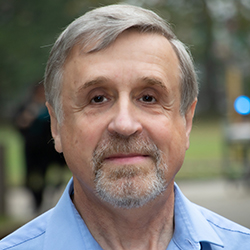 Vyacheslav E. Gorshkov, PhD
Vyacheslav E. Gorshkov, PhD
Senior Programming Analyst
PhD Physics and Mathematics, Moscow State University, Russia
Vyacheslav (Slava) E. Gorshkov, PhD, is a senior programming analyst. Gorshkov’s focus is supporting the Environmental Measurement and Modeling Division in the software design and development of the various modules of the Aviation Environmental Design Tool (AEDT).
He has more than 20 years of research and development experience in the information technology, telecommunication, energy, and science industries. Gorshkov’s scientific interests include mathematical and computer modeling in the fields of radioecology, x-rays and gamma-rays diffraction, light propagation in disperse media, and theory of stochastic fields. In the information technology field, he has been responsible for research, design, development, and implementation of applications in multi-platform and multi-operating system environments.
Gorshkov’s prior assignments at the U.S. DOT Volpe Center included design, development, and maintenance of various applications for FMCSA.
View Vyacheslav Gorshkov’s LinkedIn profile.
Aaron L. Hastings, PhD
Physical Scientist
PhD Acoustics, Purdue University
MS Mechanical Engineering, Michigan Technological University
BS Mechanical Engineering, University of Cincinnati
Aaron Hastings, PhD, is a physical scientist in the U.S. DOT Volpe Center's acoustics group. Hastings has 30 years of experience working on sound quality, environmental noise, and noise control issues in academia and the automotive and transportation industries. His work has included theoretical and experimental approaches to measuring, modeling and solving acoustic-related problems for FHWA, NHTSA, FAA, and National Park Service (NPS).
Hastings’ work at the U.S. DOT Volpe Center has included maintenance and development of FHWA’s Traffic Noise Model (TNM), measurement of highway noise, modeling of pavement-specific energy levels, measurement of snowmobile and snow coach noise in national parks, modeling of over-snow vehicle noise through the development of a modified version of FAA’s Integrated Noise Model (INM), community annoyance for FAA, and the development of minimum sound levels for NHTSA’s work related to the Pedestrian Safety Enhancement Act.
His academic research has focused on the development of sound quality metrics for automotive noise and has involved monaural and binaural measurements, acoustic signal processing, system modeling, psychoacoustics, and subjective testing techniques. Hastings has publications in the Noise Control Engineering Journal, the Transportation Research Record, and he has made numerous presentations at conferences, working groups, and public meetings.
 Georgia Klein
Georgia Klein
Environmental Protection Specialist
BS Computer Science, Harvey Mudd College
Since joining the U.S. DOT Volpe Center’s Environmental Measurement and Modeling team in 2024, Georgia Klein has supported air quality and resiliency projects through data analysis, software development, and research and technical writing. Klein is a developer for the FHWA Office of Natural Environment’s CMAQ Toolkit and participates in the International Aviation Civil Organization (ICAO) Committee for Aviation Environmental Protection (CAEP) Modeling and Databases (MDG) and Forecasting and Economic Analysis (FESG) working groups. Additionally, she has coordinated the U.S. DOT Volpe Center’s annual symposium co-hosted with Rijkswaterstaat (Dutch Ministry of Infrastructure and Water Management).
Prior to joining the U.S. DOT Volpe Center, Klein contributed to ICCT’s global on-road transportation emissions model. While at Harvey Mudd College, she researched the quality of explainable artificial intelligence models that predict ozone in Los Angeles, CA. In addition to studying computer science, Klein completed an emphasis in environmental analysis and a humanities concentration in political studies.
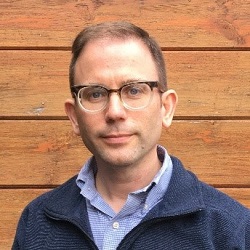 Bradley L. Nicholas
Bradley L. Nicholas
General Engineer
MEng Acoustics, Pennsylvania State University MA Education, The College of William and Mary
BA Physics, Franklin and Marshall College
Bradley (Brad) L. Nicholas joined the Environmental Measurement and Modeling Division at the U.S. DOT Volpe Center in 2020 following 18 years as a noise and vibration consultant at Harris Miller Miller and Hanson, Inc. and three years as a high school physics teacher. Since joining the U.S. DOT Volpe Center, Nicholas has conducted aviation noise analyses in support of FAA, National Aeronautics and Space Administration (NASA), National Park Service (NPS), and U.S. Fish and Wildlife Service (FWS). These analyses have addressed inputs to FAA’s Aviation Environmental Design Tool (AEDT), aircraft fleet, noise modeling algorithms, wildlife noise exposure, air tours, helicopters, and urban air mobility modeling.
As a consultant, he managed 75+ airport noise studies such as 14 CFR Part 150 studies, National Environmental Policy Act (NEPA) environmental assessment noise analyses, airport ground noise studies, helicopter noise assessments, noise measurement programs, environmental reporting projects, and on-call services. Nicholas developed curriculum and taught over 40 courses in AEDT, the Integrated Noise Model, and airport noise control practices to airports, consultants, FAA, universities, NASA, and international governmental organizations.
He designed and executed field data collection protocols for aviation flight and ground noise community measurements, aircraft and ground service equipment directivity and spectrum measurements, soundscape binaural recordings, operator procedures surveys, and community attitudes surveys. Nicholas performed analyses including aviation flight noise modeling, aviation ground noise modeling, airline fleet database analyses, noise model validation statistical analyses, representative flight track tool creation, binaural recording processing, and educational outcomes statistical analyses. Nicholas’ work supported a broad range of sponsors including airports, utilities, private companies, FAA, the Federal Interagency Committee on Aviation Noise, and the Airport Cooperative Research Program.
 Jason C. Ross, PE
Jason C. Ross, PE
General Engineer
ME Acoustics, Pennsylvania State University
BS Mechanical Engineering, University of Colorado at Boulder
Jason C. Ross, PE, is a general engineer in the U.S. DOT Volpe Center's acoustics group. Ross has 25 years of experience working in acoustics, engineering, research, and planning within the transportation and energy industries. His expertise includes project oversight, project management, grant management, preparing local, state and federal noise and vibration studies, engineering and final design of noise and vibration mitigation, and public outreach. Ross has worked on many of the nation’s largest infrastructure projects. He has provided oversight and direction for environmental professional teams in the noise, vibration, air quality, cultural resources, environmental planning, and sustainability planning disciplines.
For FAA, Ross is currently project manager of the development of the Aviation Environmental Design Tool. He manages a large team of software developers and subject matter experts to maintain and advance FAA’s tool to model aircraft performance for fuel consumption, noise, and air quality. Ross led a study for FAA to assess the implications of potential changes to the national noise policy on the environmental review of projects under the National Environmental Policy Act. He has supported FAA’s Integrated Noise Model validation for the Grand Canyon and has conducted measurements, modeling, and analysis for numerous airport noise studies.
For FRA, Ross has conducted noise and vibration studies for numerous FRA-sponsored projects, research, design, and testing of new locomotive horn technologies to improve safety and reduce noise impact, authored FRA’s High-Speed Ground Transportation Noise and Vibration Guidance Manual, and is currently supporting FRA’s new Corridor Identification and Development Program to expand intercity passenger rail across the United States.
For National Park Service, he has developed acoustic and atmospheric data collection systems, conducted extensive acoustic measurements across our nation’s parks, developed acoustic models such as a snowmobile audibility model for environmental studies of Yellowstone and Grand Teton National Park Winter-Use, developed acoustic aircraft detection systems, and supported various other technical studies.
Ross is an active member of the Transportation Research Board (TRB) and the Institute of Noise Control Engineering. Ross has written papers and made presentations at conferences for the Institute of Noise Control Engineering, Inter-Noise, Acoustical Society of America, and TRB.
View Jason Ross' LinkedIn profile.
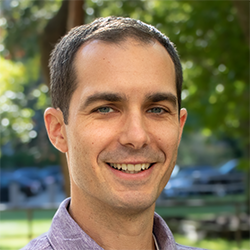 Matthew C. Simon, PhD
Matthew C. Simon, PhD
Civil Engineer
PhD Civil and Environmental Engineering, Tufts University
BS Mechanical Engineering, University of Washington
Matthew Simon, PhD, joined the U.S. DOT Volpe Center’s Environmental Measurement and Modeling Division in 2019 where he largely supports transportation emissions and air quality modeling initiatives across multiple U.S. DOT operating administrations and non-federal sponsors alike. Simon manages a diverse portfolio—including projects for FRA, FAA, and FHWA—evaluating and applying emissions dispersion models for highway and aviation sources, distilling complex models and formulations into simplified calculator tools for state and metropolitan planning organizations, and supporting interagency consultations on conformity and NEPA analyses. When possible, he enjoys collecting and applying real-world data from the field and is experienced with deploying and maintaining air quality and acoustics monitoring equipment.
With a background rooted in research, public health, and regulatory compliance, Simon thrives at the intersection of data, the scientific method, and community impacts. He is also passionate about mentoring, science communication, and connecting rigorous analysis with real-world impact. Prior to joining the U.S. DOT Volpe Center, Simon spent several years in academia investigating traffic- and aviation-related ultrafine particles (those less than 100 nanometers in diameter) in metropolitan Boston, MA and aviation noise exposure nationally. He has also spent time as an analyst for the U.S. Department of Energy’s Fuel Cell Technologies Office and taught high school science in rural North Carolina as part of the Teach For America corps. Simon is a two-time recipient of the U.S. DOT Secretary’s Award, has received an FRA award for excellence in environmental review, and is currently a co-lead for U.S. DOT Volpe Center’s Transportation Preparedness, Recovery, and Resilience Community of Practice.
View Matthew Simon’s full list of publications on ORCID.
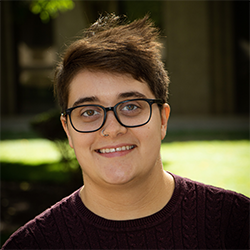 Sophie R. Son
Sophie R. Son
General Engineer
BSE Acoustic Engineering and Music, University of Hartford
MA Earth and Environment, Boston University
Since joining the U.S. DOT Volpe Center’s Environmental Measurement and Modeling team in 2019, Sophie Son (née Kaye) supports FHWA’s Office of Human Environment’s Noise and Air Quality programs, including the software development teams for the Traffic Noise Model (TNM), as well as the Database for Air Quality and Noise Analysis (DANA Tool). Son also supports NASA with the QueSST (Quiet SuperSonic Technology) mission via X-59 community response test planning and sonic boom modeling software (PCBoom) development. She helps conduct quieter pavement research and crash data analysis for the National Parks Service (NPS) Natural Sounds and Night Skies Division (NSNSD) and the Transportation Safety Team (TSP), respectively.
Son has published and co-authored several papers for the American Institute of Aeronautics and Astronautics (AIAA) Journal of Aircraft, American Society of Mechanical Engineers (ASME) Journal of Vibration and Acoustics, SAE International (previously Society of Automotive Engineers), the Institute of Mechanical Engineers (IMechE), and the International Institute of Noise Control Engineering (I-INCE).
She studied at the University of Hartford (West Hartford, CT) in a uniquely specialized degree program combining traditional engineering studies with music performance in order to train her aural skills to better understand and serve the needs of her clients. Prior to joining the U.S. DOT Volpe Center, Son had previous experience working in noise, vibration, and harshness (NVH) consulting with Brüel & Kjær Global Engineering Services and architectural acoustic consulting with Cerami & Associates.
View Sophie Son’s full list of publications on ORCID.
Lyle Tripp
Technical Lead and Task Manager
MS Transportation Engineering, University of California, Berkeley
BS Civil and Environmental Engineering (Systems), Massachusetts Institute of Technology
Lyle Tripp currently works as a technical lead and task manager within the U.S. DOT Volpe Center’s Environmental Measurement and Modeling division. Tripp is responsible for the study of national environmental and energy performance in support of FAA and its Environmental Management System, an integral component of the Next Generation Air Traffic System.
Tripp has more than seven years of experience in aviation consulting, including four years in environmental and energy strategy.
